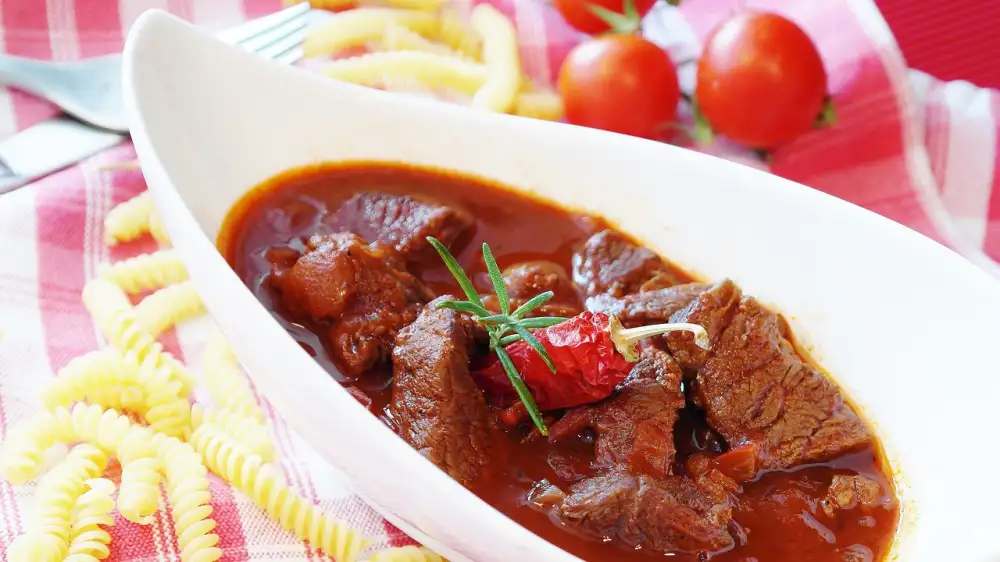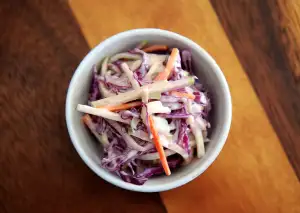Spice Up Your Recipes with Authentic Hungarian Paprika: A Flavorful Journey to Hungary's Culinary Delights

Hungarian paprika is a vibrant and aromatic spice that adds a burst of flavor to dishes. It is an essential ingredient in Hungarian cuisine, known for its rich and robust taste. Derived from the Capsicum annuum pepper plant, this spice is made by grinding dried peppers into a fine powder.
With its deep red color and distinct smoky-sweet flavor, Hungarian paprika has gained popularity worldwide. It is often referred to as the "heart and soul" of Hungarian cooking, as it forms the base of many traditional dishes.
Whether you're a seasoned chef or an amateur cook, incorporating Hungarian paprika into your recipes will elevate your culinary creations to new heights. Join us on a flavorful journey as we explore the history, varieties, health benefits, culinary uses, and traditional recipes associated with authentic Hungarian paprika.
History and Origins of Hungarian Paprika
Hungarian paprika has a rich history that dates back centuries. It is believed to have been introduced to Hungary by the Turks during their occupation in the 16th century. The Turks brought with them a variety of peppers, which were then cultivated and transformed into the vibrant spice we know today as paprika.
The climate and soil conditions in Hungary proved to be ideal for growing peppers, leading to the development of unique flavors and aromas. Over time, Hungarian farmers perfected the art of cultivating and processing paprika, making it an integral part of Hungarian cuisine.
Paprika production became particularly significant in the region of Szeged and Kalocsa, where it thrived due to favorable weather conditions. These areas are still renowned for producing some of the finest quality paprika in Hungary.
Today, Hungarian paprika is not only a staple ingredient in traditional Hungarian dishes but also highly regarded worldwide for its exceptional taste and color. Its distinct flavor profile sets it apart from other varieties of paprika, making it a sought-after spice among chefs and food enthusiasts alike.
Varieties of Hungarian Paprika
Hungarian paprika comes in a variety of flavors and heat levels, making it a versatile spice for any culinary creation. The most common varieties include sweet, hot, and smoked paprika.
Sweet paprika is the mildest variety, with a vibrant red color and a subtle, sweet flavor. It adds depth and richness to dishes without overpowering other ingredients.
Hot paprika, on the other hand, packs a punch with its fiery heat. It is made from hotter chili peppers and adds a spicy kick to dishes like goulash or sausages.
Smoked paprika, also known as "piros arany" or "red gold," is made by drying the peppers over an open flame before grinding them into powder. This process gives it a distinct smoky flavor that enhances grilled meats, stews, and even vegetarian dishes.
Each variety of Hungarian paprika has its own unique characteristics, allowing chefs to experiment with different flavors and intensities in their recipes. Whether you prefer mild sweetness or bold spiciness, there's a Hungarian paprika variety to suit every taste.
Health Benefits of Hungarian Paprika
Hungarian paprika not only adds a burst of flavor to your dishes but also offers several health benefits. Packed with essential nutrients, it is a great addition to any diet.
Firstly, Hungarian paprika is rich in antioxidants, particularly vitamin C and carotenoids. These powerful compounds help boost the immune system, protect against cell damage, and reduce the risk of chronic diseases.
Secondly, paprika contains capsaicin, the compound responsible for its spicy taste. Capsaicin has been shown to have anti-inflammatory properties and may aid in pain relief.
Furthermore, Hungarian paprika is a good source of vitamins A and E, which are important for healthy skin and eyesight. It also contains minerals like iron and potassium that contribute to overall well-being.
Moreover, studies have suggested that consuming paprika may have positive effects on digestion. It can stimulate the production of digestive enzymes and improve gut health.
Lastly, Hungarian paprika has been associated with weight management due to its low calorie content and metabolism-boosting properties.
Incorporating Hungarian paprika into your cooking not only enhances the taste but also provides numerous health benefits. So why not spice up your recipes with this flavorful ingredient?
Culinary Uses of Hungarian Paprika
Hungarian paprika is a versatile spice that adds depth and flavor to a wide range of dishes. Its vibrant red color and rich taste make it a staple in Hungarian cuisine. One of the most popular culinary uses of Hungarian paprika is in goulash, a traditional Hungarian stew. The paprika gives the dish its distinct flavor and beautiful reddish hue.
In addition to goulash, Hungarian paprika is also used in various soups, stews, and sauces. It can be sprinkled on roasted meats or vegetables to enhance their taste. The smoky and slightly sweet flavor of Hungarian paprika pairs well with grilled dishes, giving them an extra kick.
Paprikash is another classic Hungarian dish that showcases the flavor of this spice. Chicken or veal is cooked with onions, garlic, and tomatoes, then seasoned generously with paprika for a deliciously robust flavor.
Hungarian paprika can also be used as a seasoning for dips, dressings, and marinades. It adds a unique twist to deviled eggs or potato salad. Even simple dishes like scrambled eggs or roasted potatoes can be elevated by adding a sprinkle of this flavorful spice.
Whether you're cooking traditional Hungarian recipes or experimenting with new flavors, incorporating authentic Hungarian paprika will surely enhance your culinary creations. Its distinct taste profile and vibrant color make it an essential ingredient in any kitchen.
Traditional Hungarian Recipes with Paprika
Hungarian cuisine is renowned for its rich and flavorful dishes, many of which feature the star ingredient: paprika. This vibrant spice adds a distinctive taste and color to traditional Hungarian recipes, making them truly unique.
One classic dish that showcases the versatility of paprika is Goulash. This hearty stew combines tender beef, onions, garlic, and potatoes with a generous amount of sweet or hot Hungarian paprika. The result is a comforting and deeply satisfying meal that warms both body and soul.
Another beloved Hungarian recipe is Chicken Paprikash. Tender chicken pieces are simmered in a creamy sauce made with sour cream and, of course, paprika. The combination of flavors creates a luscious dish that pairs perfectly with egg noodles or dumplings.
For those seeking vegetarian options, Lecsó is a must-try dish. This colorful vegetable stew features peppers, tomatoes, onions, and paprika cooked together until tender. It can be enjoyed as a side dish or served over rice for a satisfying main course.
Lastly, Székelykáposzta is a traditional Hungarian cabbage roll dish that incorporates paprika into the filling mixture of ground pork, sauerkraut, and rice. The rolls are then baked to perfection in a savory tomato sauce infused with even more paprika.
These traditional Hungarian recipes not only highlight the incredible flavor of authentic Hungarian paprika but also showcase the country's culinary heritage. By incorporating this spice into your cooking repertoire, you can embark on a flavorful journey to Hungary's gastronomic delights right in your own kitchen.
Tips for Cooking with Hungarian Paprika
1. Choose the right variety: Hungarian paprika comes in different varieties, ranging from mild to hot. Consider the flavor profile you want to achieve and select the appropriate type accordingly.
2. Toast it for enhanced flavor: Before using Hungarian paprika in your recipes, consider toasting it lightly in a dry pan. This will release its natural oils and intensify its aroma and taste.
3. Use it as a seasoning: Hungarian paprika is a versatile spice that can be used as a seasoning for various dishes. Sprinkle it on roasted meats, stews, soups, or even scrambled eggs to add depth and complexity to your recipes.
4. Add it at the right time: To fully enjoy the flavors of Hungarian paprika, add it towards the end of cooking or during simmering to avoid burning and bitterness.
5. Store it properly: To maintain its freshness and flavor, store Hungarian paprika in an airtight container in a cool, dark place away from direct sunlight.
6. Experiment with different recipes: Don't limit yourself to traditional Hungarian dishes when using paprika. Try incorporating it into other cuisines like Mexican or Indian for a unique twist.
By following these tips, you can unlock the full potential of authentic Hungarian paprika and elevate your culinary creations with its rich and vibrant flavors.
Where to Buy Authentic Hungarian Paprika
If you're ready to embark on a flavorful journey to Hungary's culinary delights, you'll need to get your hands on some authentic Hungarian paprika. Fortunately, there are several reliable sources where you can find this spice.
One option is to visit specialty stores that focus on international ingredients. These stores often carry a wide range of spices from around the world, including Hungarian paprika. Look for stores that have a reputation for quality and authenticity.
Another option is to purchase Hungarian paprika online. There are numerous reputable websites that specialize in selling high-quality spices. Make sure to read reviews and check the authenticity of the seller before making a purchase.
If you have the opportunity, consider visiting Hungary itself. The country is known for its vibrant markets where you can find an array of local products, including authentic Hungarian paprika. Exploring these markets will not only allow you to buy the spice directly from local producers but also immerse yourself in the rich culture and history of Hungarian cuisine.
Lastly, if you have friends or family who have visited Hungary, they may be able to bring back some authentic paprika for you. This can be a great way to ensure that you're getting the real deal.
Remember, when buying authentic Hungarian paprika, look for labels that indicate "Hungarian" or "Szeged" as these are indications of its origin. Avoid generic labels that simply say "paprika," as they may not provide the same depth of flavor and quality.
By sourcing your paprika from trusted sources, you can guarantee an authentic taste experience and truly embrace the flavorful world of Hungarian cuisine.
In conclusion, Hungarian paprika is a versatile spice that adds a burst of flavor to any dish. Its rich history and distinct varieties make it a staple in Hungarian cuisine. Not only does it enhance the taste of your recipes, but it also offers numerous health benefits.
From mild to hot, there is a paprika variety for every palate. Whether you're making goulash, chicken paprikash, or even roasted vegetables, Hungarian paprika will elevate your dishes to new heights.
Cooking with Hungarian paprika is not only about adding flavor but also about embracing the culinary traditions of Hungary. By incorporating this spice into your recipes, you can embark on a flavorful journey and experience the authentic tastes of Hungary.
To make the most out of Hungarian paprika, remember to store it properly in an airtight container and use it within six months for optimal freshness. And when buying authentic Hungarian paprika, look for trusted sources that offer high-quality products.
So why not spice up your recipes and embrace the flavorful world of Hungarian paprika? Discover the magic it brings to your cooking and indulge in the culinary delights that Hungary has to offer. Your taste buds will thank you!
Published: 28. 02. 2024
Category: Recipes



